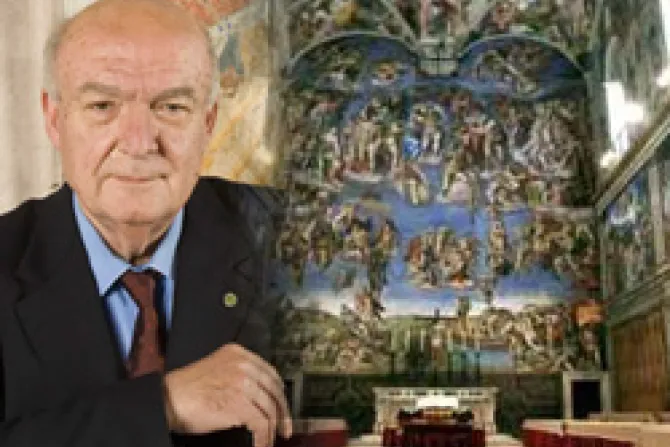Vatican City, Sep 3, 2010 / 13:17 pm
Twenty thousand visitors a day are taking their toll on Michelangelo's Sistine Chapel masterpieces. At the conclusion of a summer project to remove four years of dust from the Sistine Chapel's famed walls and ceiling, the director of the Vatican Museums cautioned that "excessive" traffic without sufficient counter-measures spells bad news for future viewers.
In Friday's edition of L'Osservatore Romano, Vatican Museums director Antonio Paolucci detailed efforts in July and August of this year to clean "possibly the most known and consequently most used and 'consumed' place of art in the world." He described a massive effort that took 30 specialists, working in rotations during the night, nearly a month to complete.
It had been four years since the last "dusting," he noted, and the staff removed "unimaginable quantities of dust and sediment" that had collected on surfaces, resulting from an average of 20,000 visitors per day.
Noting controversies accompanying the scope, method and products used in the cleaning efforts that originally restored the Sistine Chapel's treasures in the 1980s and '90s, Paolucci said that these questions are no longer an issue now that their effectiveness has been proven over time.
However, today, he explained, they are dealing with the "excessive anthropic pressure," that is, too many visitors, for the climate and pollution control measures that are currently in place.
"If we want to conserve the Sistine in acceptable conditions for the next generations," Paolucci warned, "this is the challenge that we must defeat ..." This challenge is "more arduous," he added, than those posed during the restorations of the 20th century.
Ironically, there was also an additional article in the same newspaper on Friday announcing the extension of visiting hours on certain days in September to include evening visits.


